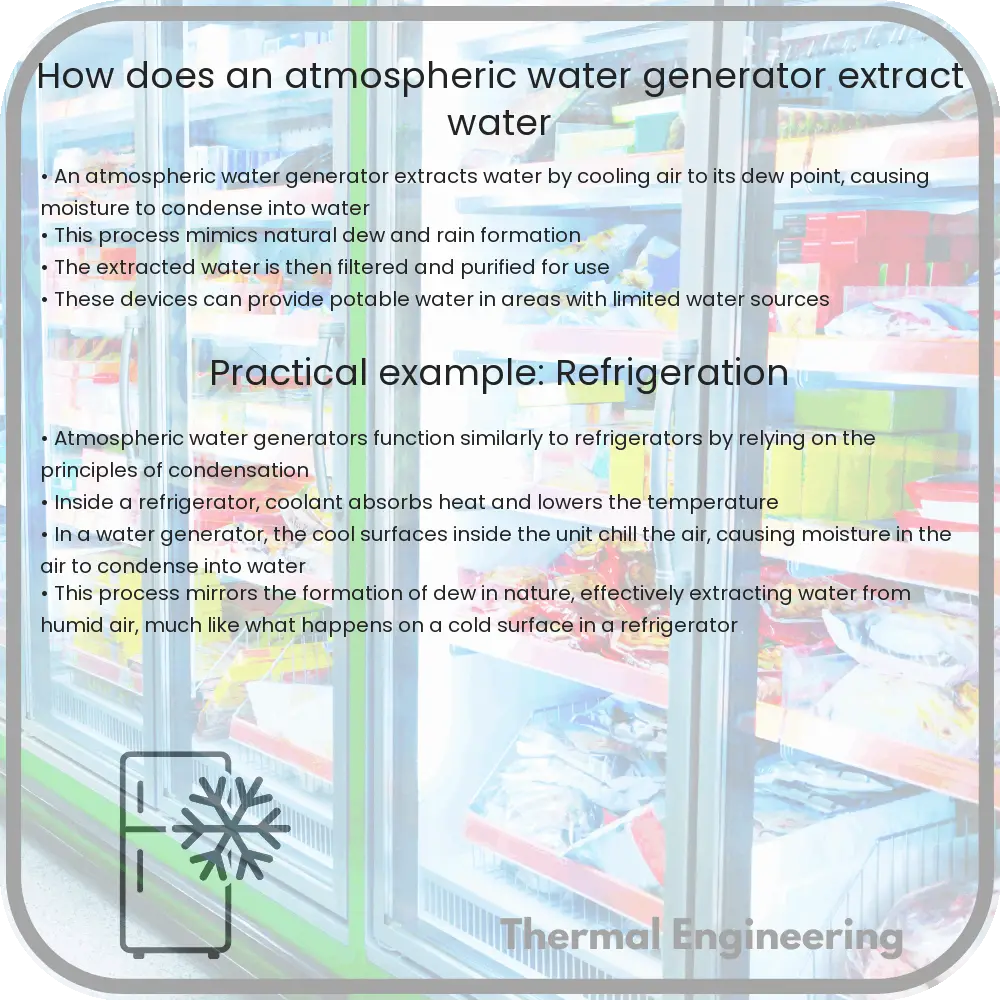Learn how Atmospheric Water Generators (AWGs) provide sustainable water by extracting moisture from air, detailing their functionality, efficiency, and applications.

Understanding Atmospheric Water Generators
Atmospheric water generators (AWGs) are devices that extract water from humid ambient air. Water vapor in the air is converted into liquid water through condensation, providing a sustainable source of water for various applications. This technology is particularly useful in areas where water is scarce but air humidity is relatively high.
How Does an Atmospheric Water Generator Work?
The basic principle behind an AWG is simple: it simulates the natural dew point, allowing water to condense and be collected. The detailed process can be broken down into several key steps:
- Air Intake: Ambient air is drawn into the AWG by a fan. Air must contain a certain level of humidity to be viable, typically above 30% to effectively produce water.
- Cooling and Condensation: The humid air is passed over a cold surface, often cooled by a refrigerant or cooling coils. As the air temperature drops below its dew point, moisture in the air condenses into droplets on the cold surface.
- Water Collection: The water droplets grow and eventually drip into a collection tank. Some models use gravity, while others aid the movement with mechanical pumps.
- Filtration and Purification: Collected water is often passed through filters to remove impurities and microorganisms. Methods such as ultraviolet light, carbon filters, or reverse osmosis can be employed to ensure the water is safe for drinking.
- Storage: The purified water is stored in a sterile tank until it is ready to be used. Some AWGs are integrated with water dispensers for immediate consumption.
Factors Influencing Efficiency
The efficiency of an AWG depends on several environmental and operational parameters:
- Humidity: Higher humidity levels directly influence the amount of water that can be harvested. AWGs are more effective in humid environments.
- Temperature: The temperature affects how efficiently the AWG can cool the air to its dew point. Cooler ambient temperatures are generally more conducive to water production.
- Technology Used: Different cooling technologies and energy sources can impact the efficiency and cost-effectiveness of the device.
- Maintenance: Regular maintenance, such as cleaning the coils and replacing the filters, is necessary to keep the AWG running effectively.
Applications of Atmospheric Water Generators
AWGs have diverse applications, crucial in both everyday and critical scenarios:
- Drinking Water: In areas with limited water resources, AWGs provide a vital source of potable water.
- Agriculture: Water generated can be used for irrigation in controlled agricultural settings, especially in arid regions.
- Industrial: Industries that require a constant, clean water supply use AWGs to mitigate the risks of water scarcity.
- Emergency Relief: AWGs can be deployed in disaster-stricken areas to provide immediate access to clean water, essential for survival in the aftermath of catastrophes like earthquakes and hurricanes.
Atmospheric water generators present a promising solution to water scarcity challenges across the globe. As technology advances, the efficiency of these devices continues to improve, making them a viable option for sustainable water sourcing in both developed and developing regions.